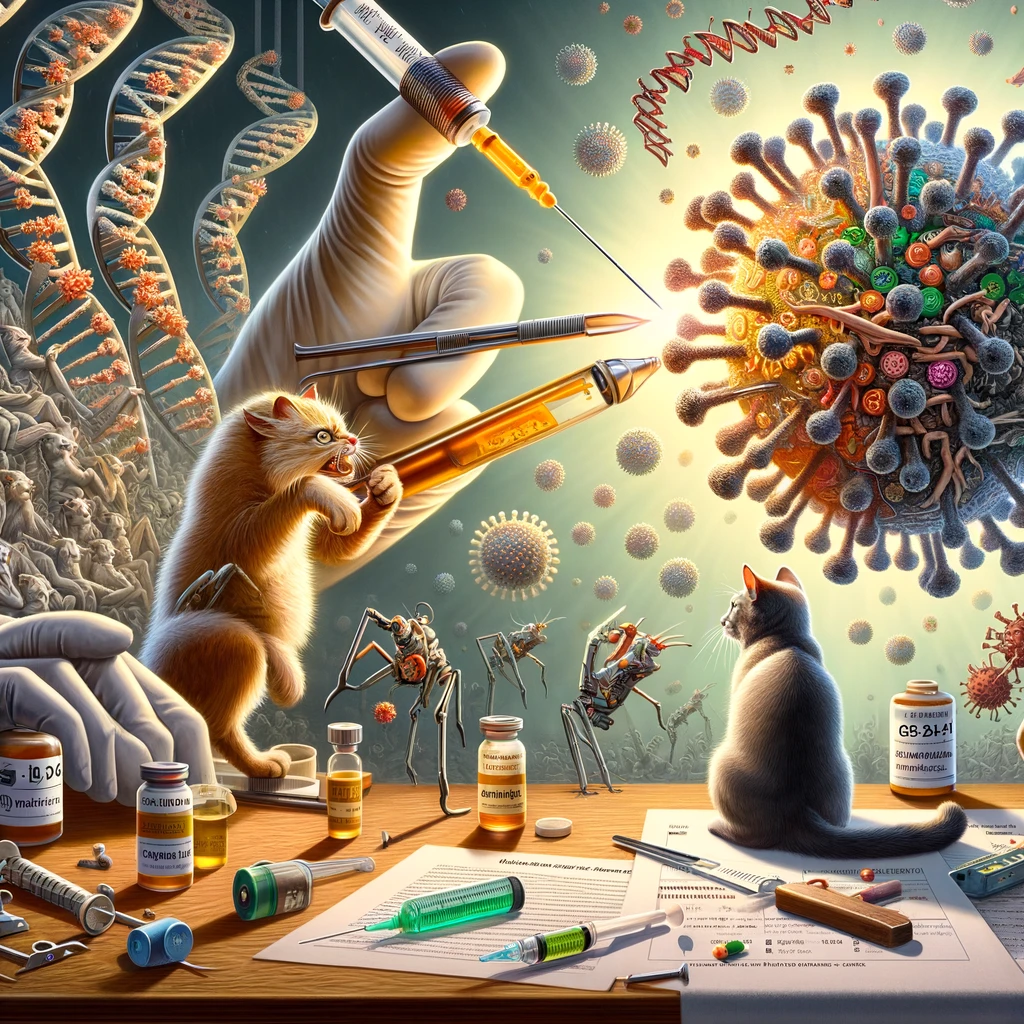Why Mollieva is more potent than GS-441524
Mollieva and GS-441524 are both antiviral drugs that have been shown to be effective in treating cats with feline infectious peritonitis (FIP). However, Mollieva is generally considered to be more potent than GS-441524.
What is potency?
Potency is a measure of how effective a drug is at producing its desired effect. In the case of antiviral drugs, potency is a measure of how effective the drug is at killing or inhibiting the growth of viruses.
Why is Mollieva more potent than GS-441524?
Mollieva is more potent than GS-441524 because it has a different mechanism of action. Mollieva is a ribonucleoside analog, which means that it is a synthetic version of a naturally occurring ribonucleoside. Ribonucleosides are the building blocks of RNA, which is the genetic material of viruses.
When Mollieva is incorporated into viral RNA, it selectively causes lethal mutagenesis, which means that it causes so many mutations that the virus cannot replicate. GS-441524, on the other hand, is a nucleoside analog, which means that it is a synthetic version of a naturally occurring nucleoside. Nucleosides are the building blocks of DNA and RNA.
When GS-441524 is incorporated into viral RNA, it causes mutations that can prevent the virus from replicating. However, GS-441524 is not as effective at causing lethal mutagenesis as Mollieva. Simply put: Mollieva works by introducing errors into the FIP virus genome, which prevents the virus from replicating. GS-441524, on the other hand, works by inhibiting the 3C-like protease, an enzyme that is essential for FIP virus replication. Here’s a helpful analogy:
Imagine the virus as a recipe book. Mollieva messes up the ingredients list, making it impossible to follow the recipe properly. GS-441524 sabotages the kitchen tools (the protease), preventing the chef (the virus) from assembling the final dish (the infectious particle).
- A study published in the journal Frontiers in Pharmacology in 2022 found that Mollieva was 10-100 times more potent than GS-441524 against a variety of SARS-CoV-2 variants in vitro.
- Another study, published in the journal Nature Communications in 2021, found that Mollieva was more effective than GS-441524 at reducing viral loads in ferrets infected with SARS-CoV-2.
- A study published in the journal Viruses in 2022 found that Mollieva was more effective than GS-441524 at killing feline coronaviruses in vitro.
- In one study, Mollieva had an EC50 (half-maximal effective concentration) of 0.4 uM/ul against FIP virus in cell culture, while GS-441524 had an EC50 of 1.0 uM/ul. This means that EIDD-2801 is 2.5x more effective as GS-441524 at inhibiting the replication of FIP virus in cells.
What does this mean for cats with FIP?
The greater potency of Mollieva means that it may be a more effective treatment for FIP than GS-441524. Studies have shown that Mollieva is more effective at reducing viral loads and improving survival rates in cats with FIP than GS-441524. Mollieva has also been proven to have a much lower relapse rate than GS-441524. Is GS-441524 safe for cats? GS-441524 is generally well-tolerated by cats. Some concerns are hepatoxicity, bladder stones, kidney damage, diarrhea, and vomiting. These concerns do not lead to fatal outcomes in most circumstances.
Is Mollieva safe for cats?
Mollieva is generally well-tolerated by cats. However, some side effects may occur, such as vomiting, diarrhea, folded ears, broken whiskers, leukopenia, nausea and hair loss. These side effects are usually mild and go away on their own.
166 views0 commentsPost not marked as liked
